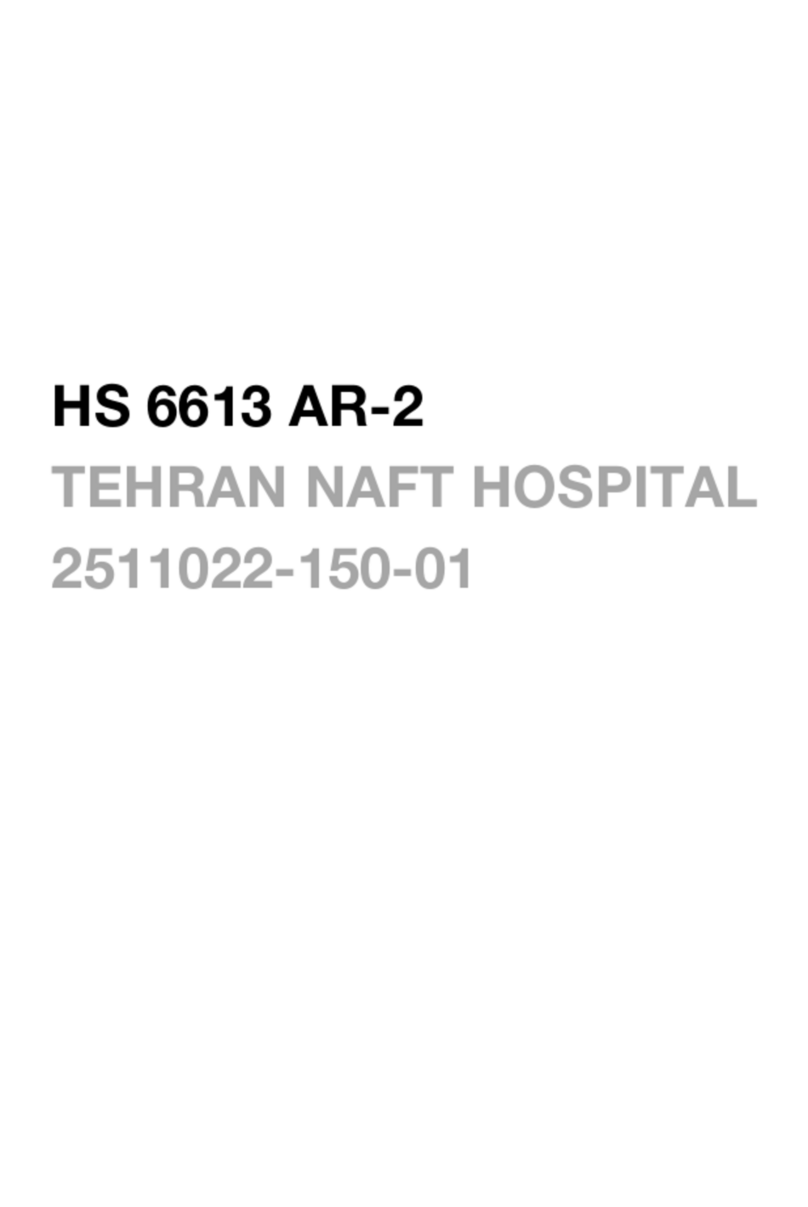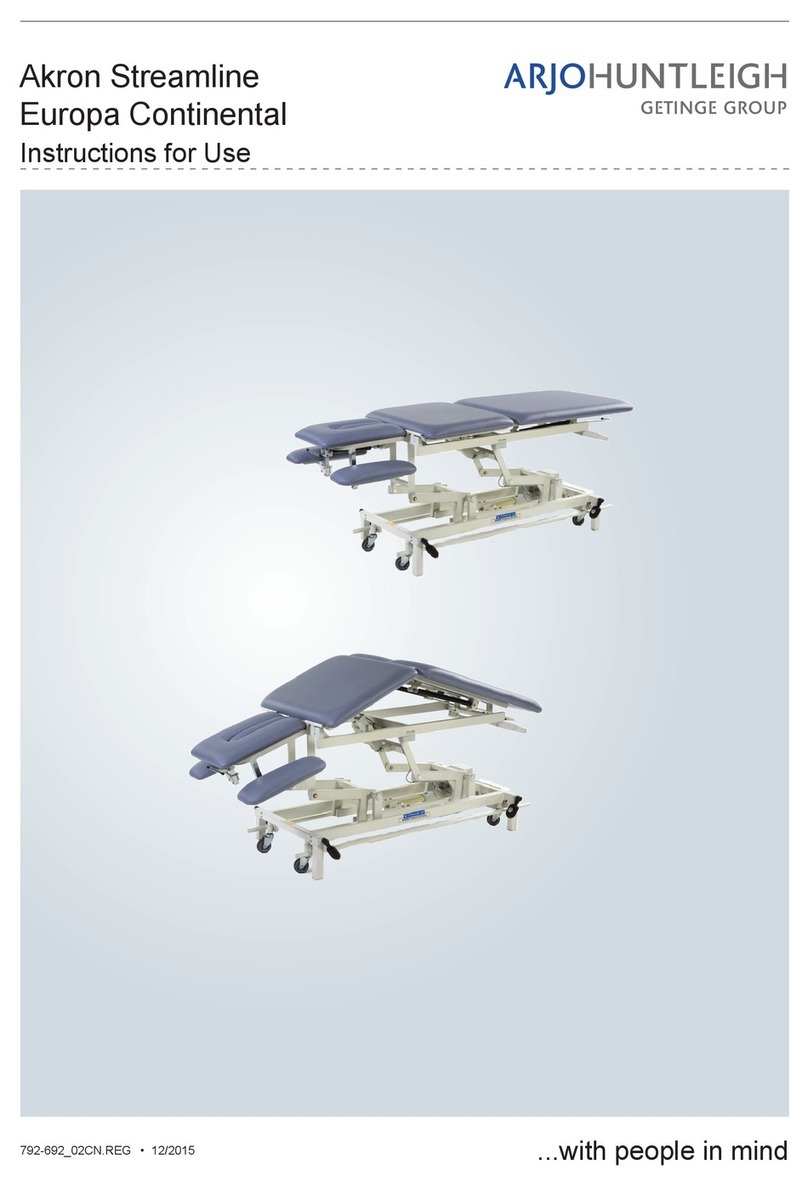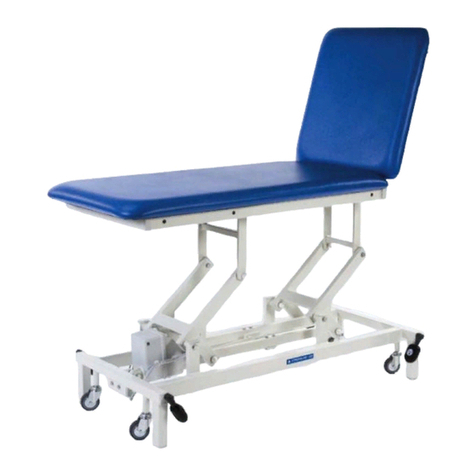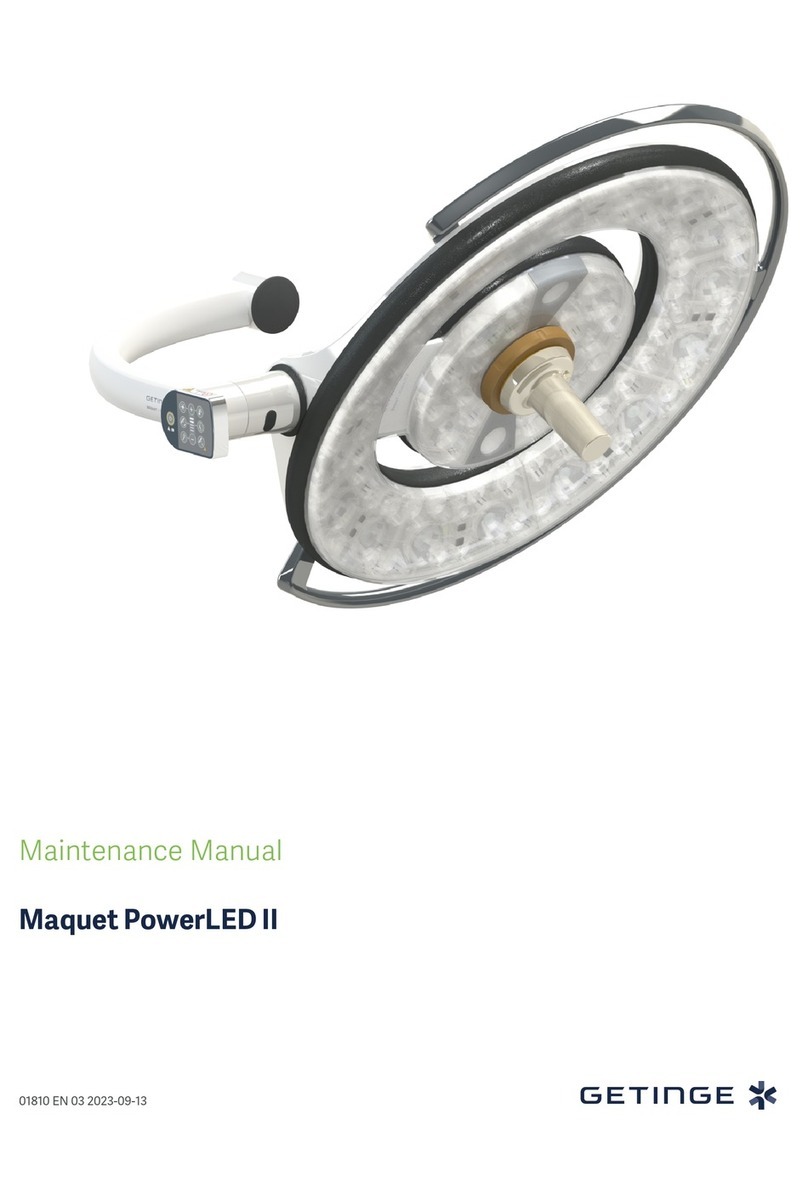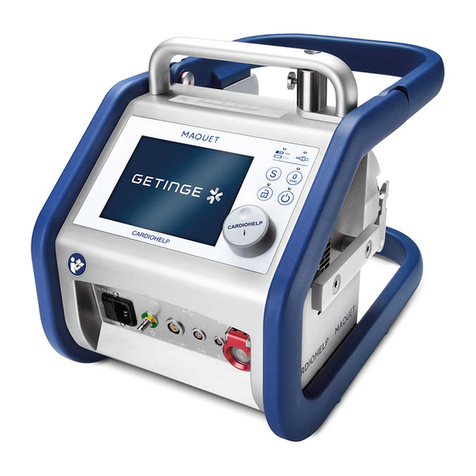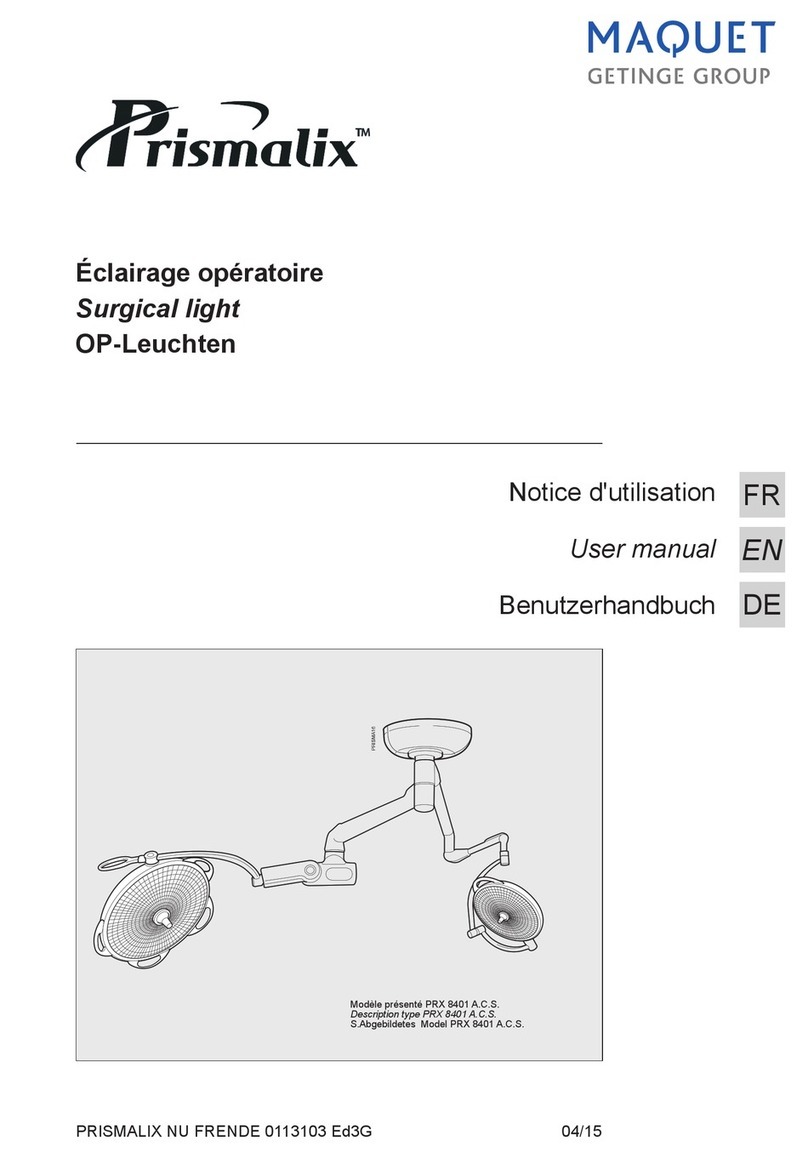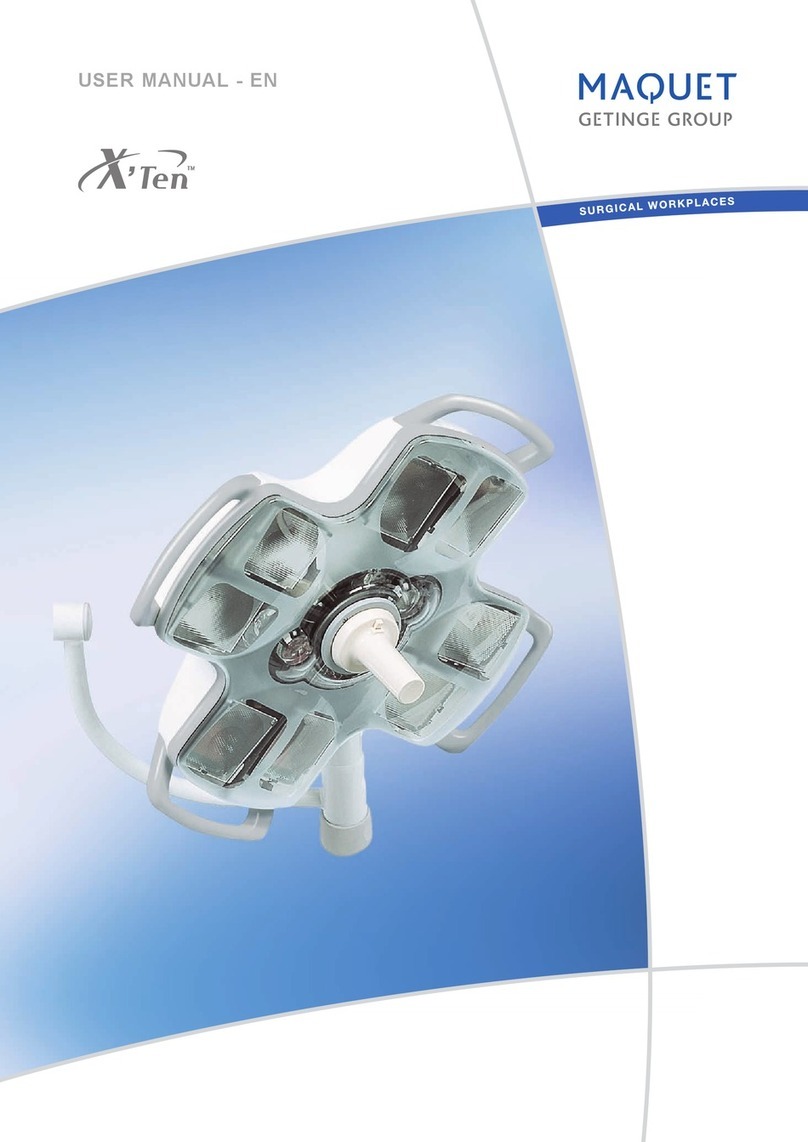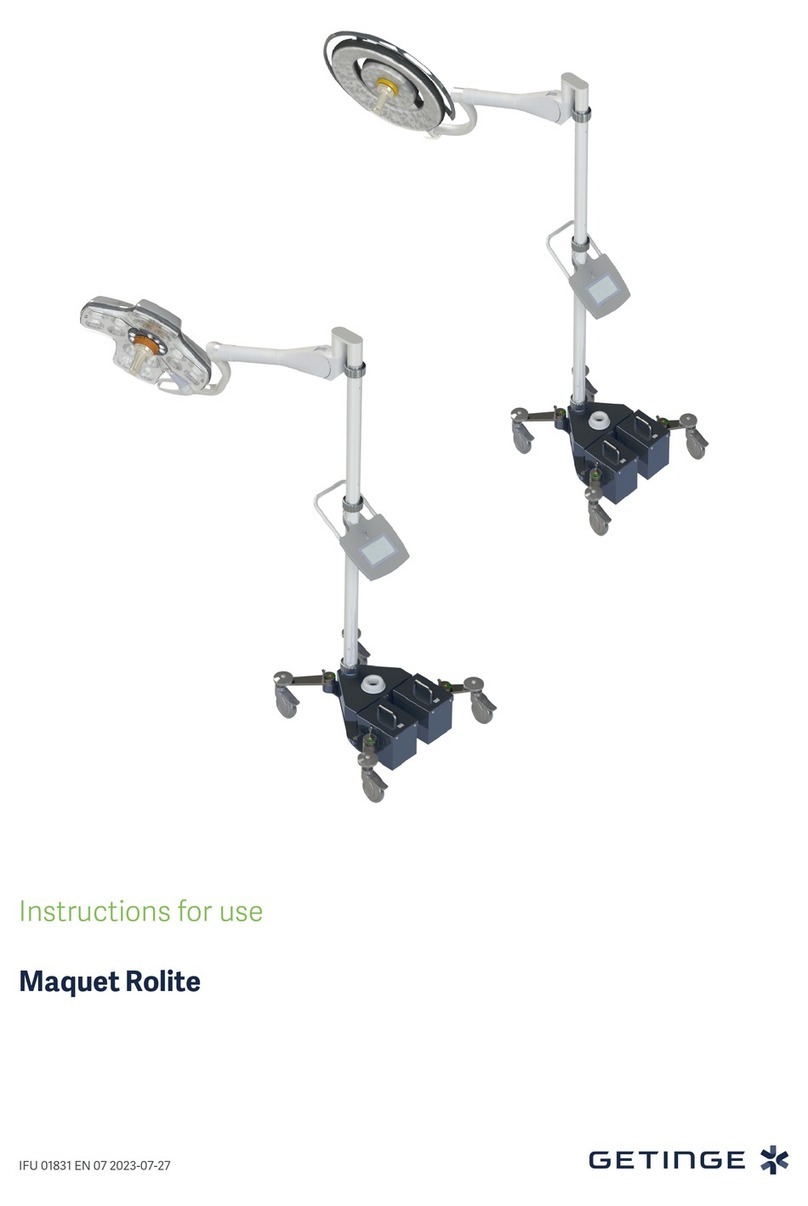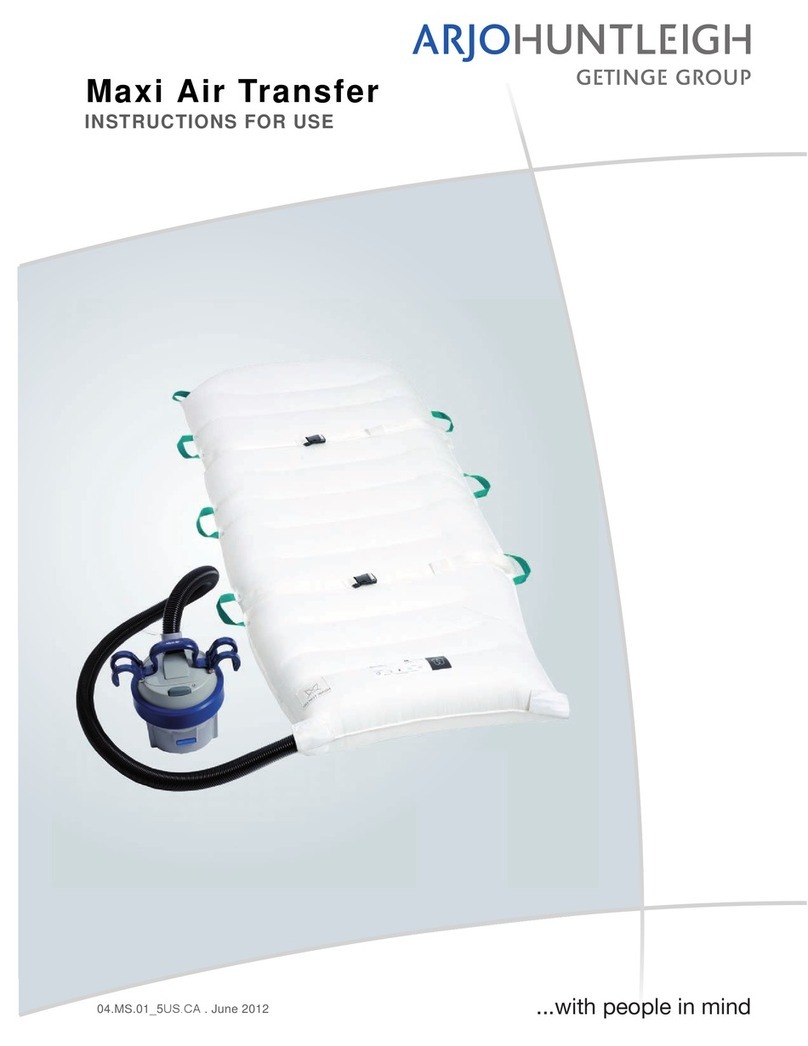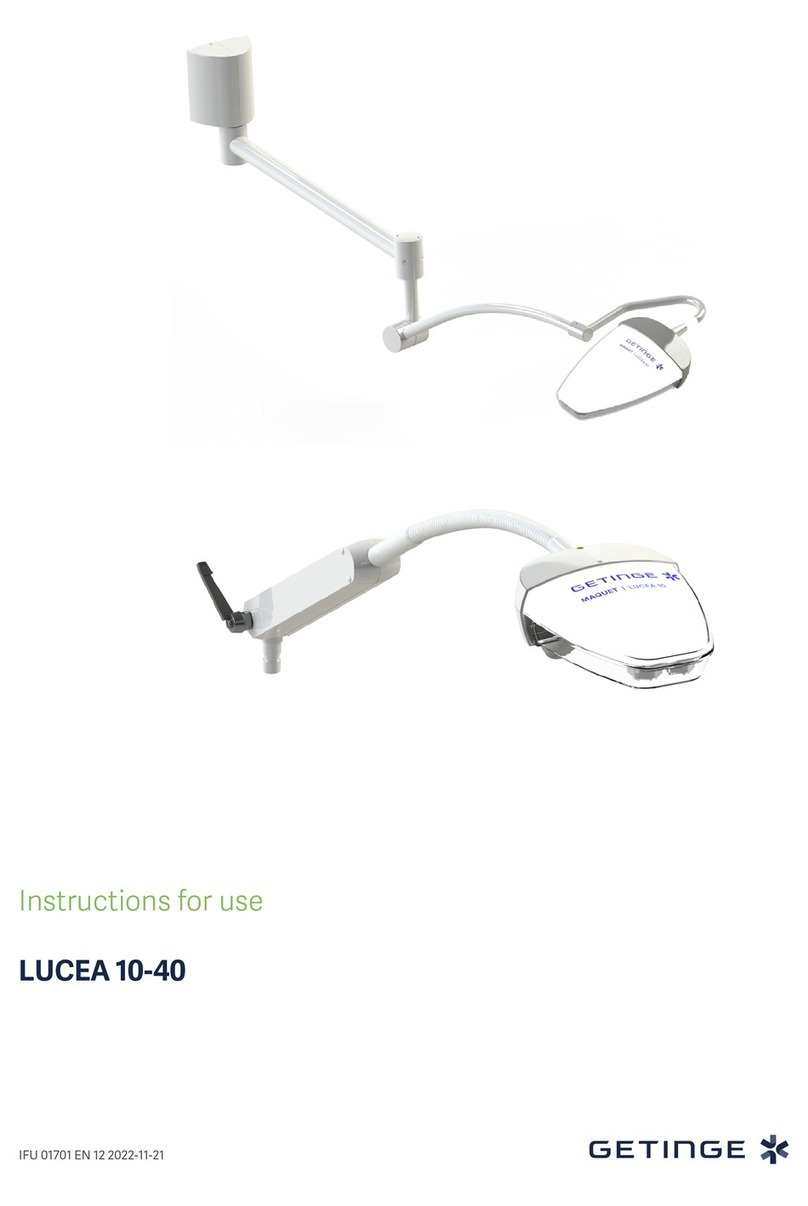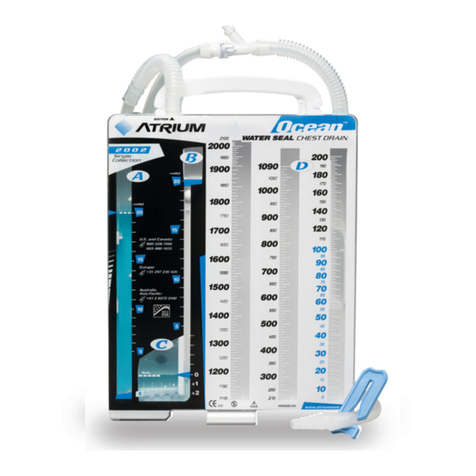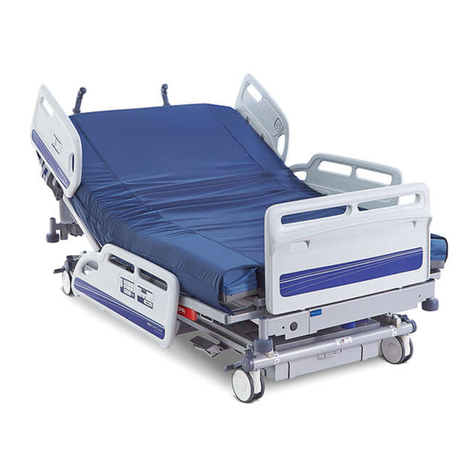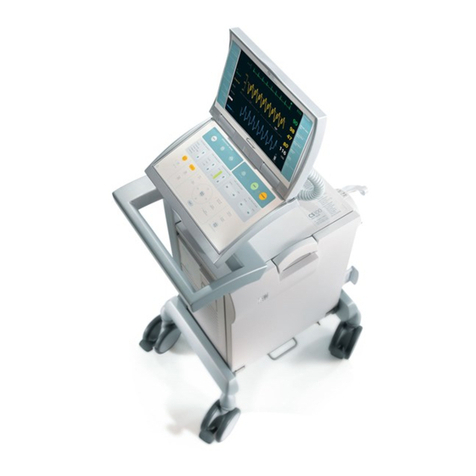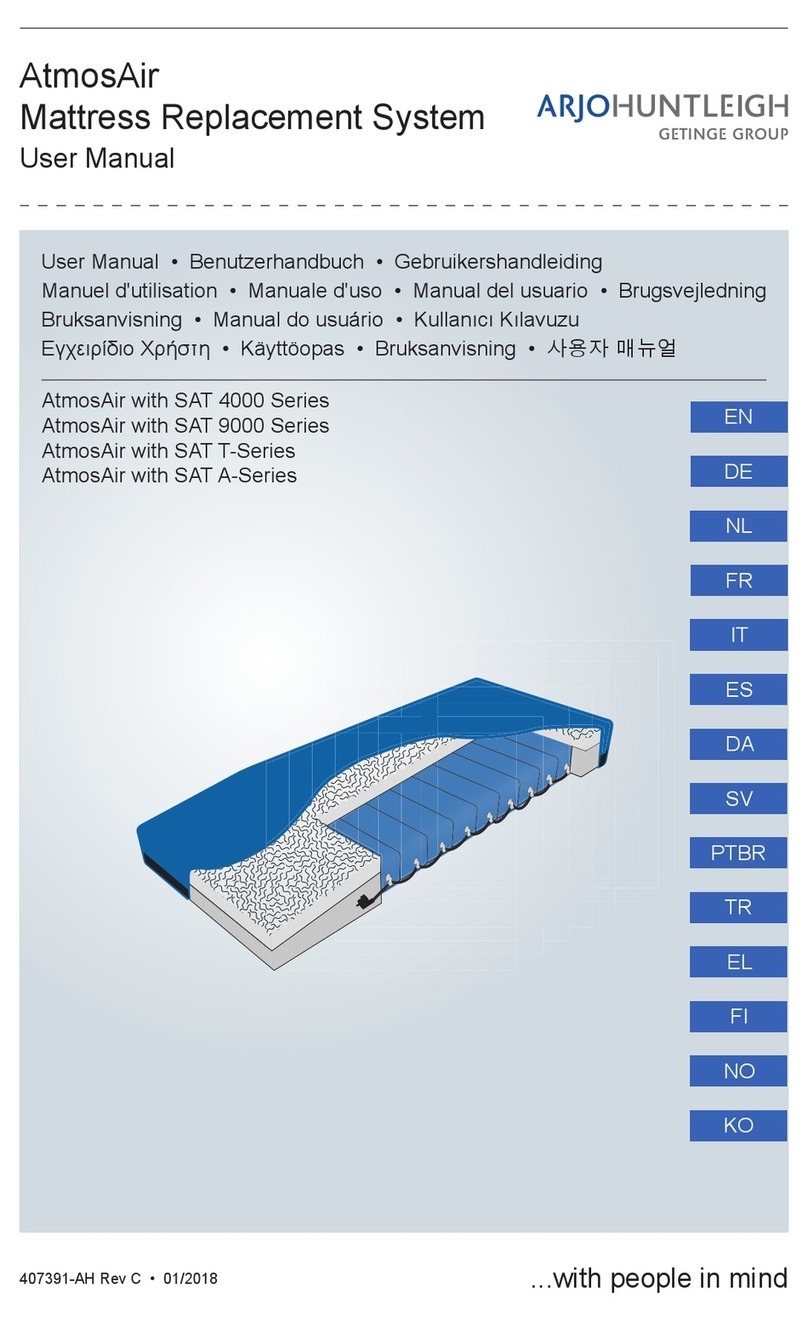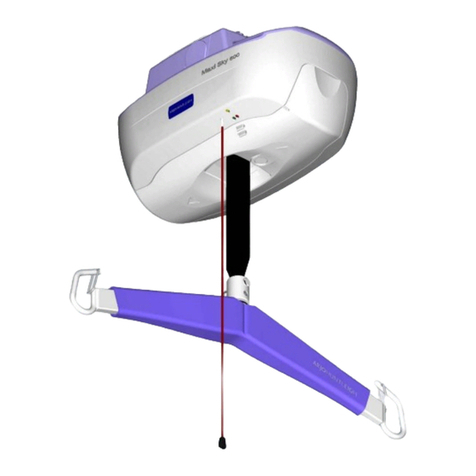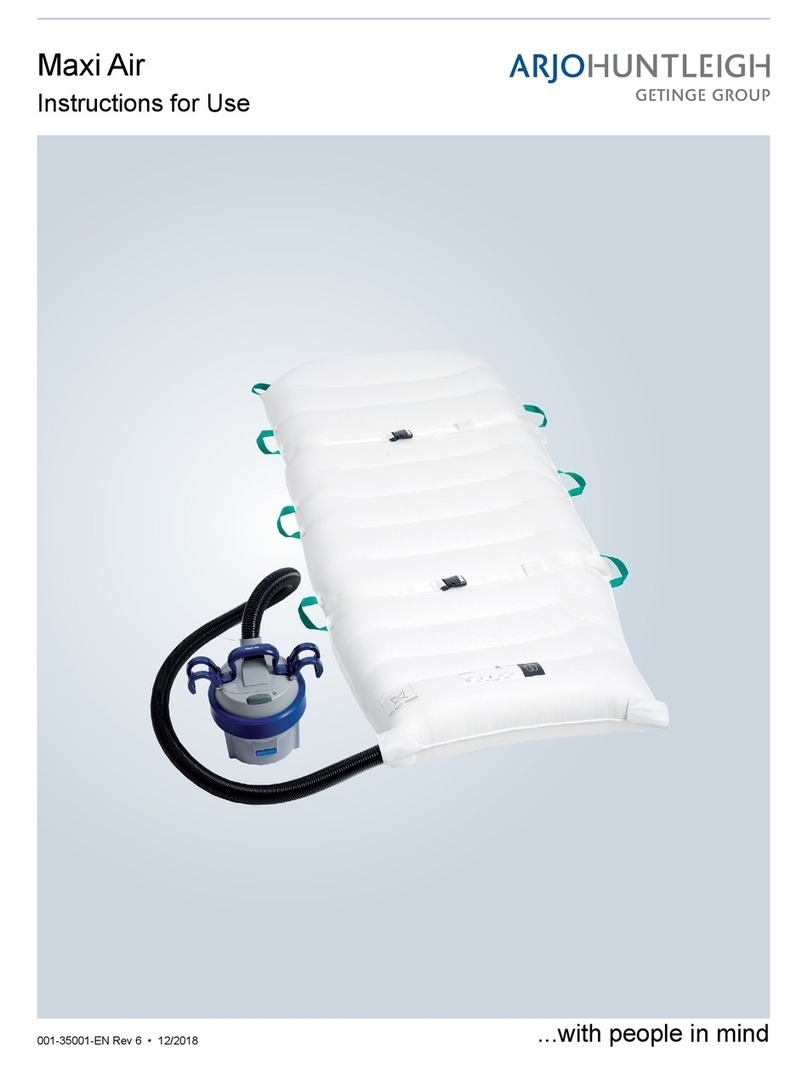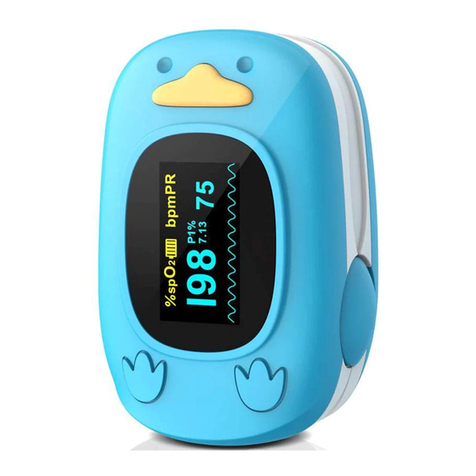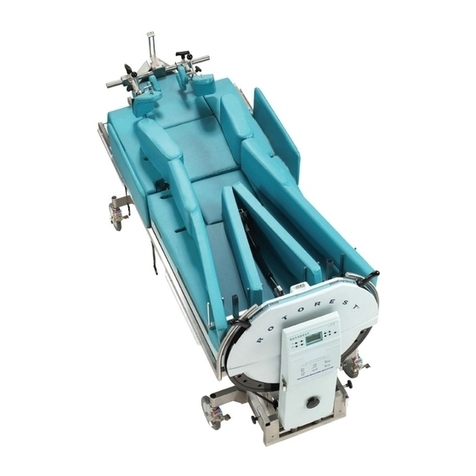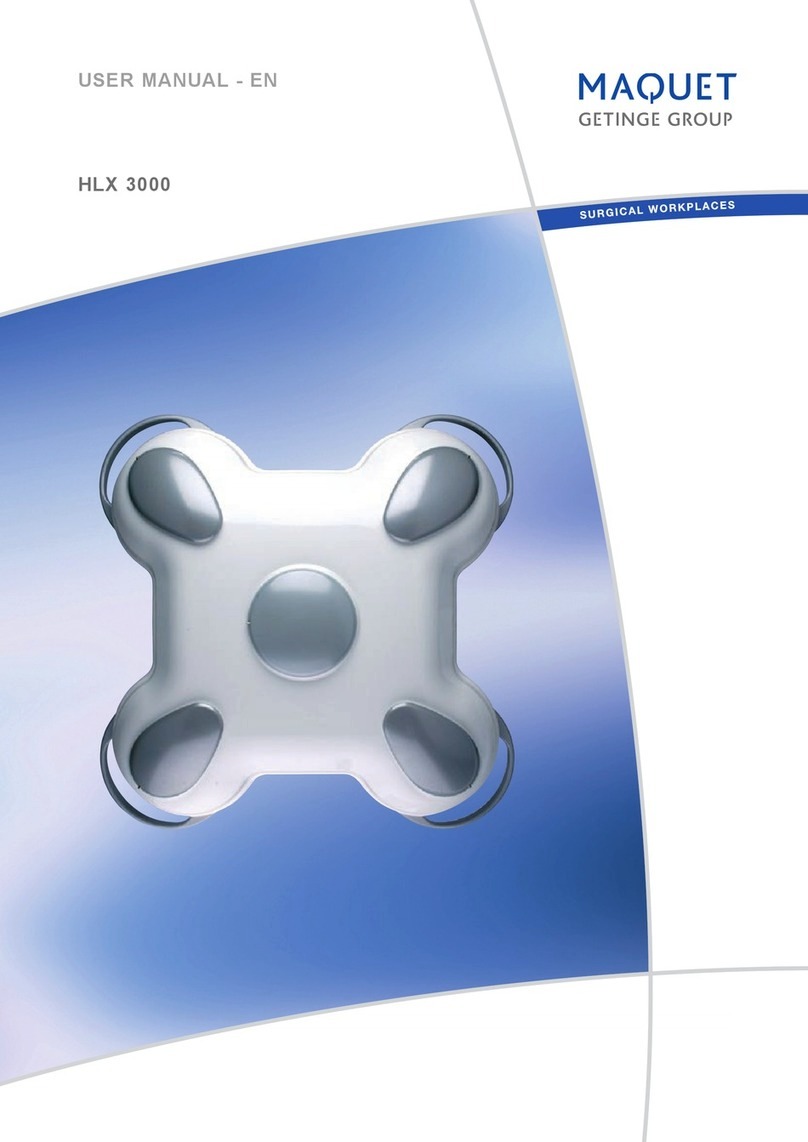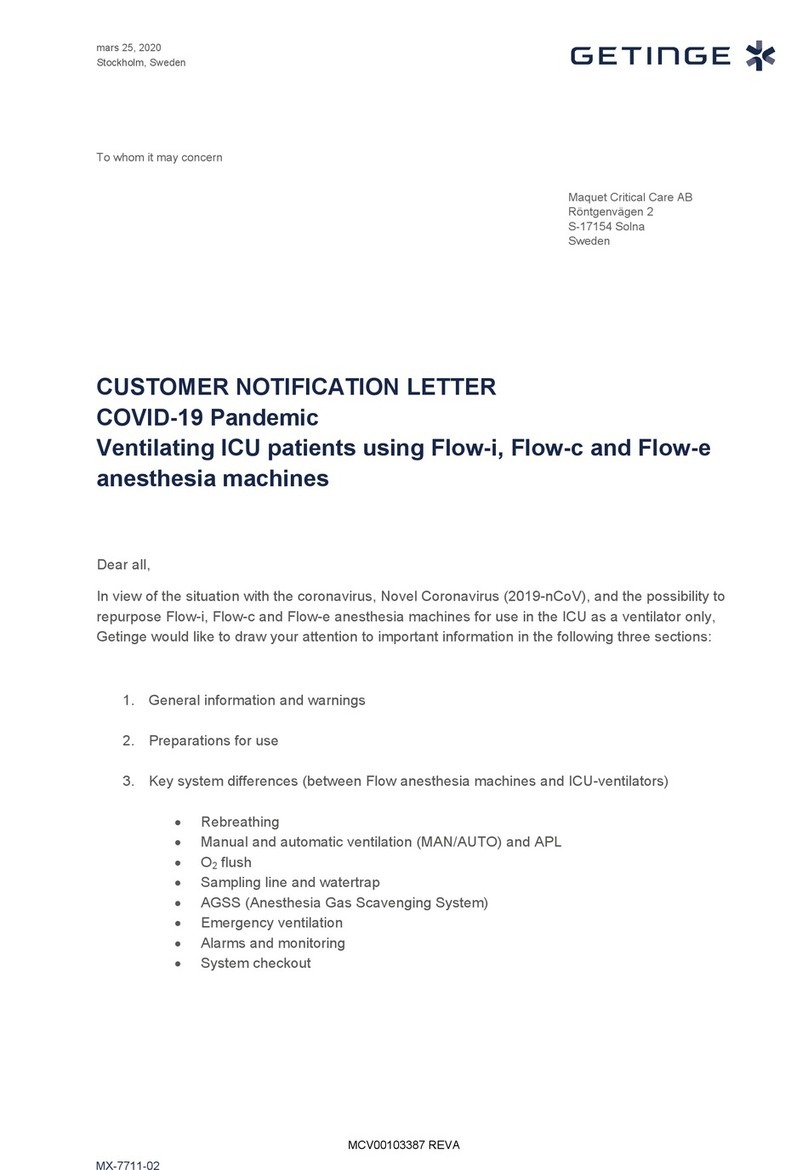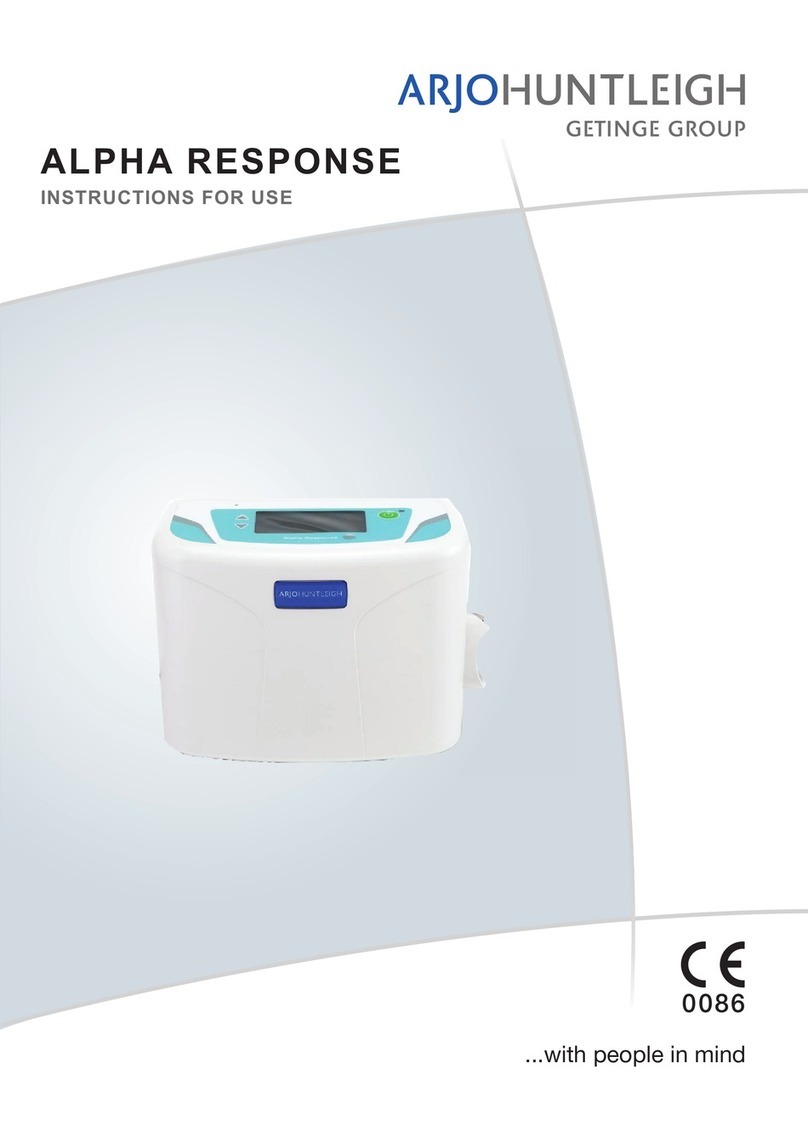
Compressor Mini Service Manual
10 Revision 02
3. Description of functions
The text in this chapter refers to the Circuit and
connection diagrams and the Functional block
diagram, see chapter 9. 'Diagrams'.
The number in each sub-heading refers to the
position number on each component in the
Functional block diagram.
3.1 Compressed air production
1. Air inlet with filter
The Air inlet with filter supplies ambient air from the
inside of the unit to the Compressor with motor.
The filter is made of a felt, and must be replaced at
the 5.000 hour overhaul as well as at the 10.000 hour
overhaul. The filter must not be cleaned in any liquid.
2. Compressor with motor
The Compressor Mini is equipped with an integrated
compressor and electric motor unit.
The electric motor is a single phase motor supplied
with mains power. There are two different versions of
the motor, one for 115 V and one for 230 V.
The motor is fitted with a self-resetting thermal
switch that will cut the power supply to the motor
if the temperature at the switch exceeds approx.
130°C (266°F). When the motor cools down, the
thermal switch will automatically restart the motor.
As motors fitted with a self-resetting termal
switch can restart automatically, all personnel
must exercise extreme caution when in the
vicinity of this equipment if fault tracing is
performed with mains power supply connected
and with the compressor cover opened or
removed.
The compressor is an oil free twin-cylinder assembly
in which the filtered air is compressed by the action
of the twin pistons. A manifold pipe is connected
between the two cylinder heads so that the
compressed air generated collectively by both
pistons is available at a single outlet on one of the
cylinder heads.
The compressor’s capacity is at least a flow rate of
30 l/min at a pressure of 350 kPa (50 psi).
An overhaul of the compressor must be performed at
the 10.000 hour overhaul.
3. Cooling coil
A preliminary cooling of the compressed air is
provided by the Cooling coil assembly, which is
made of metal tubing. The compressed air to this
cooling coil is supplied from the compressor and the
output is connected to the Thermoelectric cooler.
The Cooling coil is cooled by the air stream forced
through the unit by the Radial fan. This air stream is
then routed to the Compressor with motor.
4. Thermoelectric cooler
The Compressor Mini is equipped with a Thermo-
electric cooler. The thermoelectric cooler is a self-
contained unit including a 12 V Peltier element which
has one cool side and one warm side.
The compressed air is supplied to the cool side of
the Peltier element. When the temperature of the
compressed air is lowered, moisture that remains in
the air is partly transformed into water by
condensation. This water is then collected in the
Water separator connected to the outlet of the
Thermoelectric cooler.
The temperature at the Peltier element is controlled
by the PC board. The temperature sensor TS3,
connected to the Peltier element monitors the
temperature at the cool side of the element. To avoid
formation of ice in the thermoelectric cooler, power
supply to the Peltier element will be cut if the
temperature drops below a specified limit.
The warm side of the Peltier element is equipped
with Cooling flanges and is cooled by the air stream
provided by the Axial fan. A thermostat mounted at
the cooling flanges will cut the power to the Peltier
element if the warm side is overheated, refer to
section 32. 'Thermostat' below.
5. Water separator
The Water separator is a standard compressed air
filter (5 microns) provided to filter the air as well as to
separate water from the air. This water separator is
connected to the outlet of the Thermoelectric cooler,
and it supplies compressed air to the Tank (via a
one-way valve).
Water separated from the air is collected in the metal
bowl. The water separator is automatically drained at
regular intervals by the Drainage valve, and the water
is collected in the Drainage bottle.
The Water separator must be overhauled at the
5.000 hour overhaul as well as at the 10.000 hour
overhaul.
3
